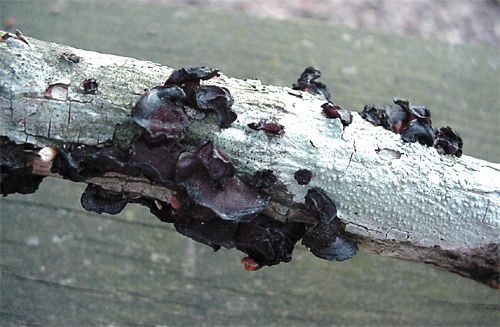Initially the fungus inhabits dead wood on pruning wounds and disease winter or mechanically injured tissues.
White sheet fungus on dead wood.
Collectively referred to as white rot fungi these filamentous basidiomycetes possess the unique ability to degrade lignin completely to co 2 in order to gain access to the carbohydrate polymers of plant cell walls for use as carbon and energy sources.
There are different types of wood destroying fungus each with identifying characteristics.
The mold usually appears first as small dust like white spots.
Efflorescence is odorless while mold growth often produces a musty odor.
When you see white spots on wood they are almost certainly white mold since efflorescence cannot appear on wood.
The fungus grows by consuming wood fiber and the wood becomes soft and punky.
There are many different enzymes that are involved in the decay of wood by white rot fungi some of which directly oxidize lignin.
Soft rot typically occurs in wood of high water content and.
If you find a white mold like substance on sheet rock or wood you can certainly rule out efflorescence.
White rot fungi are typically associated with hardwood decay and their wood decay patterns can take on different forms.
If you let the mold grows it can become bigger white blotches and even into fiber like component if the mold colony grows too large.
The annual conks are thin leathery stalkless bracketlike 1 4 inches across and often found in groups.
White rot breaks down all major wood components and commonly causes rotted wood to feel moist soft and spongy or stringy and to appear white bleached.
The fungus which causes a white spongy rot of wood can actively invade and rapidly kill the cambium the tissue between the bark and wood causing cankers with papery bark and dieback.
This fungus is opportunistic meaning that it causes wood rot when apple trees get weakened by any number of stress factors.
Brown rot is generally more serious than white rot.
Brown rot leaves a brown residue of lignin and the affected wood is usually dry and fragile and readily crumbles into cubes.
Others only attack the lignin using particularly powerful enzymes like laccase.
Because white rot fungi are able to produce enzymes such as laccase needed to break down lignin and other complex organic molecules they have been investigated for use in mycoremediation applications.
Another indication though imperfect is the presence of a mold smell.

